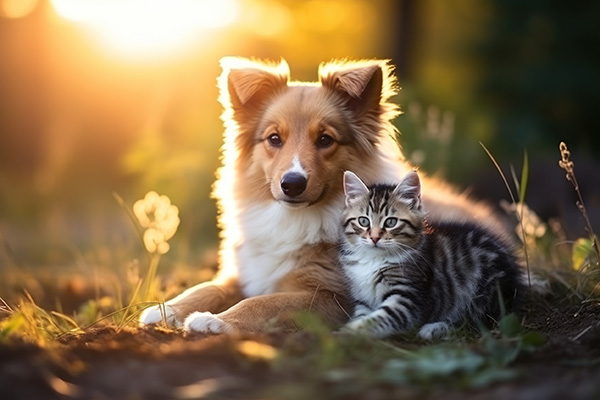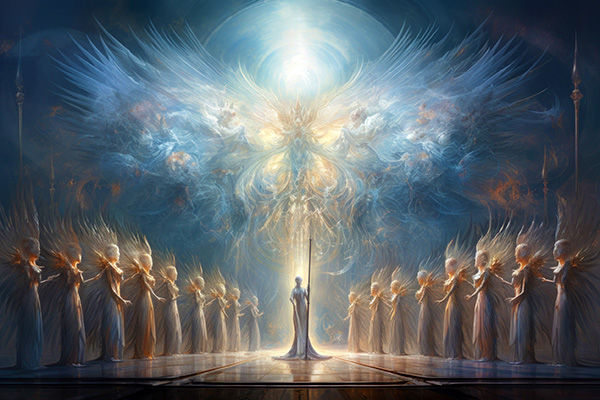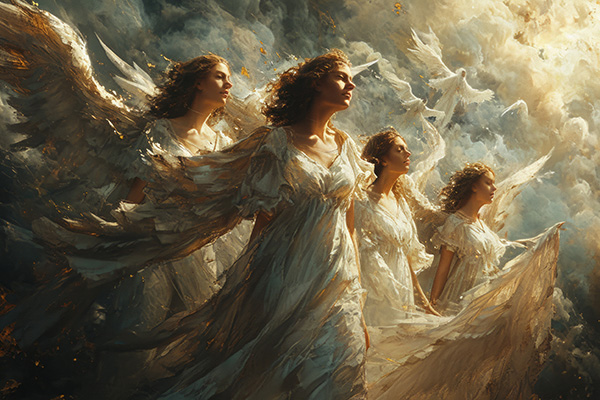Discover how to attain mental equilibrium by harnessing the energy of crystals.
 The human mind operates as a dual entity, with the left and right hemispheres working together to foster a balanced intellect.
The human mind operates as a dual entity, with the left and right hemispheres working together to foster a balanced intellect.
Each hemisphere contributes its unique strengths to the overall function, collaborating to mold our distinct insights and encounters.
The left hemisphere is celebrated for its logical, systematic, and analytical style in processing data, thriving in areas such as reasoning, mathematics, and language.
Conversely, the right hemisphere is recognized for its intuitive, innovative, and emotionally rich nature, driving creativity, visual reasoning, and spiritual understanding.
This differentiation in cognitive abilities shapes our thinking, problem-solving capabilities, and interactions with both our inner and outer worlds.
Within the field of energy work and healing, a variety of crystals and stones can support and amplify the inherent strengths of each brain hemisphere, fostering overall mental and emotional balance and harmony.
Whether your goal is to enhance focus for problem-solving or to elevate artistic expression, the right selection of crystals can aid in cultivating a harmonious mind that nurtures both intellectual and creative development.
By setting distinct intentions and consistently utilizing the suitable crystals and stones, you can channel their energies to unify both hemispheres of the brain and encourage a holistic approach to life.
In this sacred equilibrium, the mind and spirit discover oneness, fostering a profound sense of completeness and satisfaction—a blend of reason and intuition, structure and fluidity, thought and emotion.
The application of crystals and stones to influence the body’s energies is one of the most ancient and possibly the most effective forms of holistic therapy ~ Michael Gienger
Crystals For Left-Brain Function
If you aim to enhance your left-brain capabilities, certain crystals can boost clarity, concentration, and analytical reasoning.
Fluorite, for instance, is highly esteemed for its capacity to improve focus and organizational skills. It is frequently utilized by both students and professionals who require precise processing of extensive information.
Rose Quartz, often linked with love and compassion, also fosters emotional equilibrium, which is vital for sustaining logical judgment without being clouded by intense emotions. Amethyst serves as another powerful crystal that sparks mental clarity and supports critical problem-solving, making it an invaluable companion for those needing to think analytically and make informed choices.
Amazonite, recognized for its soothing energy, encourages harmony and self-expression. It assists individuals in articulating their thoughts confidently and conducting rational conversations without becoming overly emotional.
Lapis lazuli, a stone symbolizing wisdom and intellect, facilitates deep contemplation and effective communication, enabling one to express ideas clearly. Lastly, Clear Quartz, often termed the “master healer,” amplifies focus and cognitive sharpness, enhancing the logical functions of the left brain.
Crystals For Right-Brain Function
Conversely, if you wish to nourish your right brain, you can incorporate crystals that bolster creativity, intuition, and emotional depth.
Garnet, a stone embodying passion and inspiration, fosters artistic expression and amplifies the capacity to think creatively.
Hematite, known for its grounding attributes, enhances intuitive insight while providing stability to ensure creative energy is used constructively. Lava stone, derived from the primal forces of the earth, facilitates emotional release and encourages unrestrained creativity, making it perfect for artists and visionaries.
Obsidian, a profoundly protective stone, fosters emotional healing and intuition. It aids individuals in processing past experiences and accessing their subconscious for inspiration and self-exploration. Red Jasper, a stone of motivation and exploration, ignites inspiration and encourages courage in creative pursuits.
Tiger’s Eye nurtures confidence and imaginative thinking, encouraging individuals to trust their instincts and achieve their artistic potential.
Beyond functioning as tools for cognitive enhancement, crystals also act as connectors between the mind and spirit, assisting us in maintaining a deeper connection with our inner selves. The act of selecting and working with crystals can be a meditative practice in its own right, fostering mindfulness and awareness.
Stones are a sublime dance of light and vibrational vitality, and this energetic level can create bridges that connect frequencies – a realm where magical thinking can genuinely occur. ~ Brett Larkin
Practical Ways To Harness Crystal Mind Power
To effectively utilize these crystals, there are numerous ways to integrate them into your daily activities. For instance, carrying a small piece of fluorite in your pocket or donning lapis lazuli jewelry can ensure a consistent flow of mental clarity throughout the day.
Engaging in meditation with amethyst or placing clear quartz on a work surface can elevate concentration and problem-solving abilities. For those seeking artistic inspiration, keeping a piece of Garnet or Red Jasper in a studio or workspace can ignite creative flow and foster unconventional thinking.
Forming a crystal grid is an additional potent method for harmonizing mental energies. By arranging a combination of stones that support both the left and right brain in a geometric design, individuals can amplify the synergistic benefits of these crystals. Positioning Amazonite and Lapis Lazuli in the center of the grid can facilitate balanced communication, while surrounding them with Amethyst, Fluorite, and Hematite can further integrate the logical and intuitive faculties of the mind.
Utilizing affirmations and visualization techniques can also enhance the effects of crystal healing. Holding a clear quartz while stating affirmations like “My mind is clear and focused” or “I trust my intuition and creative flow” can strengthen a state of mental harmony. Visualizing energy flowing evenly between both hemispheres of the brain while meditating with these stones can produce a tangible sense of balance and unity.
Incorporating crystals into bedtime routines can amplify their benefits. Placing amethyst or lapis lazuli beneath a pillow can encourage insightful dreams and mental clarity upon waking. For individuals experiencing emotional turbulence, a combination of rose quartz and hematite on a nightstand can cultivate tranquility and stability, enabling the subconscious to process thoughts and emotions freely.
Ultimately, achieving a balance between the energies of the left and right brain fosters a well-rounded approach to life. While rationality and analysis guide us through structured settings, creativity and intuition add richness and dimension to our experiences. By employing crystals that resonate with these cognitive functions, individuals can nurture mental clarity while embracing the fluidity of intuition.
|
Mystic Shelley is a five-star psychic, Reiki healer, clairvoyant, and empathic reader. She provides her clients with truthful insights about past, present, and future events with the assistance of her trusted guides. Her readings cover love, relationships, career, finance, and all life matters. Born with abilities associated with being a gifted psychic, she initially chose not to develop them. A significant encounter with a renowned psychic in her 30s catalyzed her gift awakening. With clairvoyance and empathy as her innate gifts, her psychic mentor helped her enhance those talents, elevating her skills. Through experience, she has grown proficient, and now has a loyal clientele who consistently commend her work. Furthermore, she actively assists other psychics in awakening their abilities. For straightforward and sincere insights, book a reading with Mystic Shelley now at PsychicAccess.com |
Discover How to Attain Mental Balance Through the Power of Crystal Energy
In today’s fast-paced environment, achieving mental equilibrium and inner serenity has never been more vital. An increasing number of individuals are exploring alternative methods to find comfort and restore their mental health. One such technique gaining traction is the utilization of crystal energy.
For centuries, crystals have been employed across various cultures for their healing capabilities. They are thought to radiate vibrations that can help align our energy centers, commonly referred to as chakras, and foster overall mental and emotional well-being. By comprehending and leveraging the power of crystal energy, you can achieve mental balance and inner tranquility.
Initially, understanding that distinct crystals carry unique properties and energies is crucial. Each crystal possesses a specific vibration that resonates with particular aspects of our being. For instance, amethyst is famed for its calming and soothing qualities, while rose quartz is known for love and compassion. By selecting the appropriate crystals for your specific needs, you can amplify their healing effects and attain mental balance.
Commencing your journey towards mental equilibrium involves cleansing and charging your crystals. Crystals absorb energy from their environment, so it’s important to clear any negative or stagnant energy they may have collected. You can cleanse your crystals by placing them under running water, burying them in the earth, or using smoke from sage or incense. After cleansing, you can charge your crystals by exposing them to sunlight or moonlight, helping them absorb energies from these celestial sources.
Once your crystals are cleansed and charged, you can commence integrating them into your daily practices. A powerful approach to leverage crystal energy is through meditation. Find a tranquil space, hold your chosen crystal, and concentrate on its energy. Allow yourself to be fully present in the moment and let the crystal’s vibrations resonate with your essence. This technique can help calm your mind, alleviate stress, and enhance mental clarity.
Alternatively, wearing crystals as jewelry or keeping them in your pocket can provide their healing properties throughout the day. By having a crystal close at hand, you can gain its energy benefits, promoting mental balance wherever you find yourself.
Moreover, creating a crystal grid can amplify their healing effects. A crystal grid comprises a geometric formation of multiple crystals arranged in a specified pattern. This design heightens the crystals’ energies and generates a significant energetic field. By setting intentions and directing your energy toward the grid, you can manifest your goals and achieve mental equilibrium.
It’s vital to acknowledge that while crystals can be a formidable resource for attaining mental balance, they should not substitute for professional medical or psychological guidance. If you’re grappling with severe mental health concerns, seeking professional assistance is paramount.
In conclusion, harnessing crystal energy can serve as an invaluable approach to achieving mental balance and finding inner peace. By understanding the distinct properties of various crystals, cleansing and charging them, and incorporating them into your daily routines, you can access their healing vibrations. Whether through meditation, wearing crystals, or constructing a crystal grid, these practices can aid you in discovering solace and restoring your mental well-being. Always approach crystal energy with an open mind and pursue professional help when necessary. Continue reading














